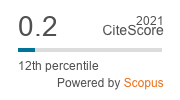Supervivencia libre de progresión en pacientes portadores de meningiomas vacunados con nimotuzumab
Resumen
Introducción: en los últimos años la biología de los meningiomas cerebrales ha comenzado a entenderse mejor. La inmunoterapia activa contra el factor de crecimiento epidérmico es un concepto emergente, en el que se propone manipular la respuesta inmune del individuo, para generar anticuerpos específicos contra el factor de crecimiento epidérmico, capaces de bloquear la unión ligando-receptor y por consiguiente la señalización a través de este último. El receptor del factor de crecimiento epidérmico está sobrexpresado en este tipo de tumor.
Objetivo: estimar la sobrevida libre de progresión de la entidad clínica y su relación con algunas variables socio-demográficas y terapéuticas seleccionadas.
Métodos: se realizó un estudio descriptivo, transversal, en 25 pacientes portadores de meningiomas, tratados con un anticuerpo monoclonal humanizado (AcM h-R3) (nimotuzumab), en el Hospital Provincial Docente Clínico Quirúrgico "Saturnino Lora" de Santiago de Cuba, en el período comprendido entre el 1 de diciembre del 2013 y el 30 de noviembre del 2015.
Resultados: el conjunto de pacientes incluidos en el estudio (n= 25) se caracterizó por el predominio del sexo femenino (60 %), edad de 50 y más años (68 %), piel blanca (48 %) y escala de Karnofsky de 100 puntos (84 %). El tiempo medio libre de progresión fue de 17 ± 8,6 meses.
Conclusiones: fueron identificadas las principales características de la supervivencia libre de progresión del meningiomas en pacientes vacunados con AcM h-R3 y el tiempo fue como promedio de alrededor de año y medio.
Descargas
Citas
2. Calvocoressi L, Claus EB. Epidemiology and Natural History of Meningiomas. En: Necmettin Pamir M, Black MP, Fahlbusch R. Meningiomas: a comprehensive text. Philadelphia: Elsevier; 2010. p. 61-77.
3. Morán F, Casacó Parada A, Prince López J, Cañizares Marrero C, Pérez La OP, Morales Pérez L, et-al. Resultado preliminar del tratamiento con Nimotuzumab en 3 pacientes con meningiomas recurrentes Rev Cubana Neurol Neurocir. 2011 [citado 2013 Ago 15];1(1):37-43. Disponible en: http://www.revneuro.sld.cu/index.php/neu/article/view/15/114
4. Asthagiri AR, Lonser RR. Surgical Management of Parasagittal and Convexity Meningiomas. En: Quiñones-Hinojosa A. Operative Neurosurgical Techniques Indications, Methods, And Results. Philadelphia: Elsevier; 2012. p. 398-409.
5. Violaris K, Katsarides V, Sakellariou P. The Recurrence Rate in Meningiomas: Analysis of Tumor Location, Histological Grading, and Extent of Resection. Open Journal of Modern Neurosurgery. 2012;2:6-10.
6. Fathi A-R, Roelcke U. Meningioma. Curr Neurol Neurosci Rep. 2013;13:337.
7. Roser F, Honegger J, Schuhmann MU, Tatagiba MS. Meningiomas, Nerve SheathTumors, and Pituitary Tumors. Diagnosis and Treatment. Hematol Oncol Clin N Am. 2012;26:855-79.
8. Saraf S, Mccarthy BJ, Leevillano J. Update on Meningiomas. The Oncologist. 2011 [cited 10 oct 2016];16. Available from: http://dx.doi.org/10.1634/theoncologist.2011-0193
9. Simó M, Cristina Izquierdo C, Bruna J. Systemic Treatment of Recurrent Meningioma. European Association NeuroOncology Magazine. 2013;3(3):132-8.
10. Krupp W, Holland H, Meixensberger J. Intracranial Meningiomas:Treatment and Quality of Life. En: Hayat MA.Tumors of the Central Nervous System: Meningiomas and Schwannomas. Berlín: Springer; 2012.
11. Norden AD, Drappatz J, Wen PY. Advances in Meningioma Therapy. Current Neurology and Neuroscience Reports. 2009;9:231-40.
12. Serna E, Morales JM, Mata M, Gonzalez-Darder J, San Miguel T, Gil-Benso R. Gene Expression Profiles of Metabolic Aggressiveness and Tumor Recurrence in Benign Meningioma. PLoS ONE. 2013 [cited 21 jun 2016];8(6). Available: https://www.ncbi.nlm.nih.gov/pmc/articles/PMC3696107/
13. Du Z, Abedalthagafi M, Aizer AA, McHenry AR, Sun HH, Bray MA. Increased expression of the immune modulatory molecule PDL1 (CD274) in anaplastic meningioma. Oncotarget. 2014 [Cited 21 jun 2016];7(6). Available from: https://www.ncbi.nlm.nih.gov/pmc/articles/PMC4467109/
14. Monleon D, López-Ginés C, Gil-Benso R, González-Darder JM, Cerdá-Nicolas M. Meningioma Tumors: Detection of Subgroups. En: Hayat MA.Tumors of the Central Nervous System: Meningiomas and Schwannomas. Berlín: Springer; 2012. p. 7.
15. Oya S, Kawai K, Nakatomi H, Saito N. Significance of Simpson grading system in modern meningioma surgery: integration of the grade with MIB-1labeling index as a key to predict the recurrence of WHO Grade I meningiomas. J Neurosurg. 2012;117:121-8.
16. Gabeau D, Lui YW. Genetic and Clinical Features Associated with Recurrence in Atypical Meningioma. En: Hayat MA.Tumors of the Central Nervous System: Meningiomas and Schwannomas. Berlín: Springer; 2012. p. 179-89.
17. Pankaj K. Agarwalla PK, Aghi MK. Atypical Meningioma: Distinguishing Features and Role of Adjuvant Radiation. En: Hayat MA.Tumors of the Central Nervous System: Meningiomas and Schwannomas. Berlín: Springer; 2012.
Publicado
Cómo citar
Número
Sección
Licencia
Aquellos autores/as que tengan publicaciones con esta revista, aceptan los términos siguientes:- Los autores/as conservarán sus derechos de autor y garantizarán a la revista el derecho de primera publicación de su obra, el cual estará simultáneamente sujeto a la Licencia de reconocimiento de Creative Commons. Los contenidos que aquí se exponen pueden ser compartidos, copiados y redistribuidos en cualquier medio o formato. Pueden ser adaptados, remezclados, transformados o creados otros a partir del material, mediante los siguientes términos: Atribución (dar crédito a la obra de manera adecuada, proporcionando un enlace a la licencia, e indicando si se han realizado cambios); no-comercial (no puede hacer uso del material con fines comerciales) y compartir-igual (si mezcla, transforma o crea nuevo material a partir de esta obra, podrá distribuir su contribución siempre que utilice la misma licencia que la obra original).
- Los autores/as podrán adoptar otros acuerdos de licencia no exclusiva de distribución de la versión de la obra publicada (p. ej.: depositarla en un archivo telemático institucional o publicarla en un volumen monográfico) siempre que se indique la publicación inicial en esta revista.
- Se permite y recomienda a los autores/as difundir su obra a través de Internet (p. ej.: en archivos telemáticos institucionales o en su página web) antes y durante el proceso de envío, lo cual puede producir intercambios interesantes y aumentar las citas de la obra publicada.





